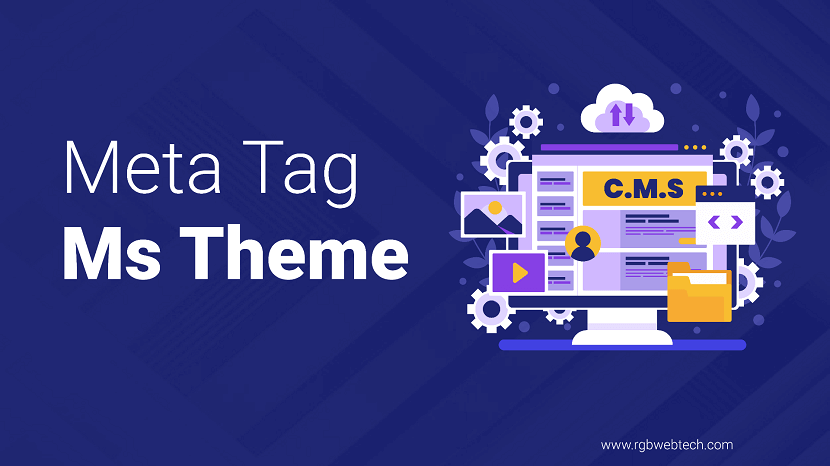Meta Name Mstheme Compatible
Updated on January 15, 2025 by RGB Web Tech

Meta Name="MSThemeCompatible" – Explained
The meta name="MSThemeCompatible" is an HTML meta tag used to declare a website’s compatibility with Microsoft themes. It is most commonly employed in environments like SharePoint or other Microsoft-based platforms to ensure a seamless visual and functional experience.
By including this tag in your web page’s HTML, developers can signal that the site's design is optimized for Microsoft’s interface styling. As a result, when accessed through Microsoft applications, the website maintains a consistent and visually integrated user experience.
This tag plays a crucial role in maintaining a uniform appearance across Microsoft platforms, helping users interact with familiar UI elements when navigating the site via tools like SharePoint.
How to Use the meta name="MSThemeCompatible" Tag
To implement this meta tag in your HTML document, follow these simple steps:
1. Open the HTML file using a text editor or HTML editor.
2. Locate the head section of your HTML document (usually found between the html and body tags).
3. Insert the following line within the head section:
This tag indicates that your website supports Microsoft themes by setting its content value to "yes".
4. Save your changes.
Adding this tag helps Microsoft applications recognize that your site is compatible with their theming standards, which allows your interface to align with Microsoft’s default styling for a smoother user experience.
Advantages and Disadvantages of Using MSThemeCompatible
Pros
- Consistent User Experience: Ensures that your website retains a coherent look and feel across Microsoft platforms like SharePoint, contributing to user familiarity and comfort.
- Enhanced Visual Appeal: Microsoft themes are often professionally designed. Leveraging them can improve your site's aesthetics when accessed via Microsoft tools.
- Better Integration:Sites optimized for Microsoft themes typically integrate more smoothly with Microsoft services, potentially unlocking enhanced features or functionality.
Cons
- Limited Use Outside Microsoft Ecosystem:This tag has little to no impact outside of Microsoft applications. If your audience uses a diverse range of platforms, the tag may offer limited value.
- Design Constraints: Aligning your site with Microsoft’s themes might restrict custom design freedom. Highly unique or brand-specific layouts could be harder to implement without conflict.
- Ongoing Maintenance: As Microsoft updates its themes and UI guidelines, websites relying on this tag might need to adjust accordingly—resulting in added maintenance efforts.
Conclusion
The meta name="MSThemeCompatible" tag is a useful tool for developers aiming to create websites that align visually and functionally with Microsoft’s design standards. It’s especially relevant for SharePoint or other Microsoft-based environments where consistency is key.
However, its relevance is mostly confined to the Microsoft ecosystem. You should weigh the benefits of consistent styling and better integration against potential design limitations and maintenance demands. If your audience spans multiple platforms, consider whether alternative solutions—like responsive, cross-platform CSS frameworks—might better meet your needs.
Ultimately, the decision to use the MSThemeCompatible tag should be guided by your site’s audience, goals, and ecosystem compatibility.
If you found this article helpful, we encourage you to share it on your social media platforms—because sharing is caring! For more information about article submissions on our website, feel free to reach out to us via email.
Send an emailWritten by RGB Web Tech
SEO Checklist - Boost Your Website Ranking
Enhance your website performance with our Complete SEO Checklist. This detailed guide covers essential aspects like On-Page SEO, Off-Page SEO, Technical SEO, Backlink Building, Mobile Optimization etc. Follow our step-by-step SEO Checklist to improve search rankings, boost organic traffic, and achieve sustainable online growth. Start optimizing today!
